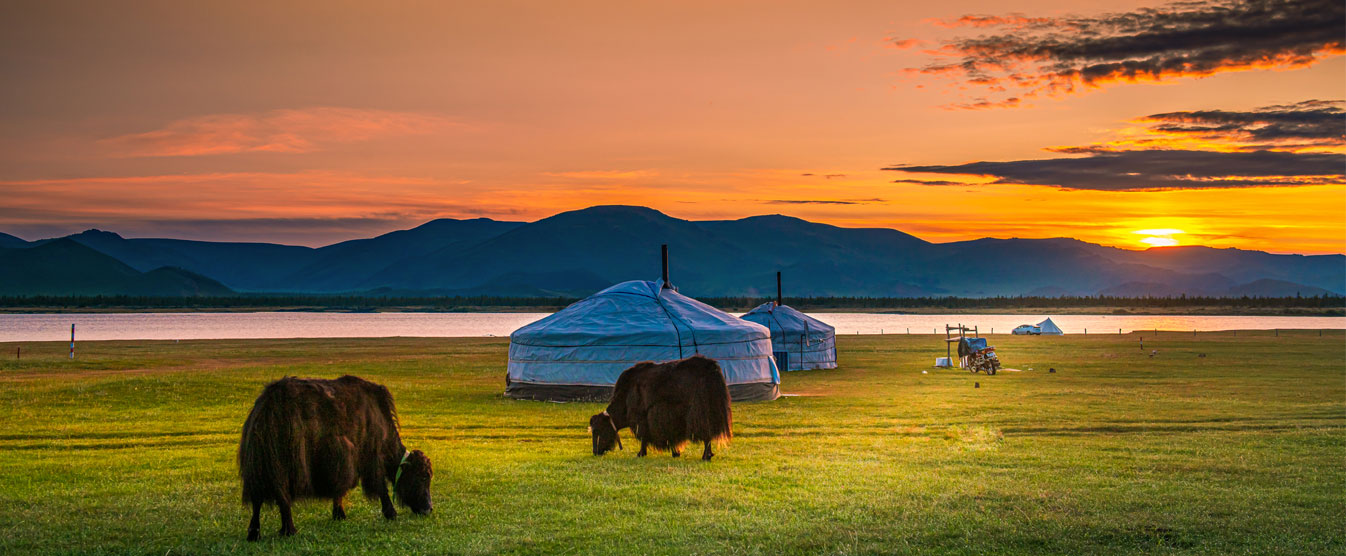Khongor Sand Dunes – Mongolia Travel Destinations
The Khongoryn Els Sand Dunes, also known as Duut Mankhan – the Singing Dunes. These are the largest sand dunes in the Mongolian Gobi Desert. However, they represent only 3-5% of the entire landmass of the Gobi Desert. They form part of the immense Gobi Gurvan Saikhan National Park – Mongolia’s largest national park.
Families who live alongside Khongoryn Els make their home close to the banks of the small but essential Khongoryn Gol. This small river creates a small unique microclimate and ecosystem allowing grasses, plants and edible berries to grow and for an environment suitable for insect and birdlife to flourish. Common birds found here are fork-tailed swifts, desert wheatears, northern lapwings and desert warblers.
The sand dunes stretch for about 180km long and 12km wide in a valley squeezed between the Bayan Tsagaan Mountains to the north and the Zoolon and Sevrey Mountains to the south. The highest dunes rise around 200m from the valley floor and occur near the north-western end of the dune field.
The dunes are aligned in the same direction as the Gobi Gurvan Saikhan and the Sevrey mountain range. The prevailing wind funnelling along the corridor made by the two chains seems to sweep lighter grains from the surrounding desert and pile them along the lowest section of the outwash plains into this great wall, with lower dunes behind it as if in a rain shadow. The dunes are not a static feature – the constituent parts move whilst the form remains permanent. Dig down and you will find dampness – for the dunes not to it not to dry out, the surface sand must be constantly renewed.
The sands mostly sing when the wind blows from the east to the west – when the grains of sand with a layer of silica is set moving by the wind, vibrating together to make a deep hum.
Naturally, the dunes attract high visitor numbers – especially at sunset. That’s why we recommend taking an extended camel trek so that you can explore the immense landscapes away from the crowds

Things to do in Khongoryn Els Dunes:
- Camel trekking through dunes, and surrounding areas
- Visiting a camel breeder nomadic family to learn how they take care of their livestock animals, how they milk female camels and produce dairy products by camel’s milk and experience Gobi nomads’ traditions, cultures and lifestyle.
- Trekk to the Duun Mankhan dune to see the sunset in the Gobi desert of Mongolia. This is the highlight for many of our guests.
- Plant a tree(s) near our green lodge in the Gobi desert against desertification.
Thing(s) not to do when you are in Khongoryn Els:
- Sliding from dunes by sledge: Many tour agencies and travel organizers provide this type of activity for their travellers, but we don’t recommend this to our guests due to our anti-desertification policy.
How to visit Khongoryn Els:
You can drive south through Mandalgobi town and Dalanzadgad town from Ulaanbaatar. It usually takes 2 days to get there from Ulaanbaatar. Also, you can take a domestic flight from Ulaanbaatar to Dalanzadgad, then rent a car from Dalanzadgad to Khongor sand dunes. The flight usually takes 3-4 hours, and the drive from Dalanzadgad to the sand dunes lasts for 4-5 hours.
Besides, you can join in our small group journeys to the Gobi desert to explore not only Khongoryn els, but many other stunning places in the Gobi including Tsagaan Suvarga – White stupa, Yolyn am valley, Bayanzag – the flaming cliffs. Ongy monastery, Nemegt valley, Khermen Tsav- a Mongolian grand canyon and more places.
Here are our journeys to the Gobi 2022:
http://mongoliantravelagency.com/tours/gobi-expedition-2022/
http://mongoliantravelagency.com/tours/gobi-tours-2021/





![Khuisiin Naiman Nuur [Eight Laikes of Mongolia]](http://mongoliantravelagency.com/wp-content/uploads/2021/09/8-lakes-hore-trip.jpg)










